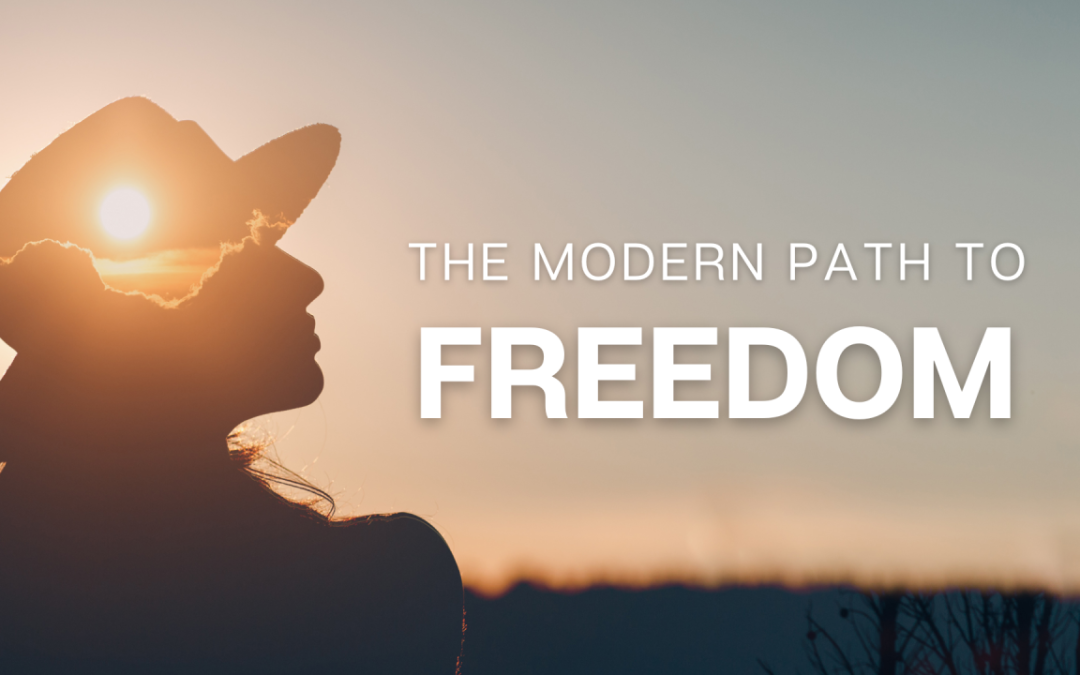OK, so you long for inner peace, well-being, and true joy. You probably even tried meditation and mindfulness. But it’s not enough, is it? The moment you leave that yoga mat and go back into the “real” world, you also go back to your old patterns of thinking, feeling, and doing.
Why is that? And what would be a modern and more pragmatic approach to achieve immediate and sustainable mental/emotional well-being?
It is time for a change!
In my latest article, The Source of Our Suffering and Limitations, we saw how all of our limitations, as well as our suffering, are created in (and maintained by) our minds.
And we do that through the two lies we tell ourselves every day; these two illusory constructs we take as true: Mental Time (that past, present, and future exist as we know them), and Dualism (we interpret and judge).
All this self-limiting and suffering happens because of two fundamental lies we tell ourselves every day.
The (not-so-realistic) path
Now, many sages and philosophers have tried to show us the path to liberation, freedom, happiness, fulfillment, and enlightenment, by avoiding or escaping these 2 constructs.
They have taught us to live in the here and now and to not judge. They have been telling us we should live consciously, in the present moment.
This is all great and true, but it is also impractical and unrealistic. It is not in line with our 21st-century lifestyle. We cannot pretend to be all Buddha’s—at least not all the time. At the end of the day, we all have bills to pay, jobs to do, things to plan, and a limited set of skills and knowledge to do all that.
So, instead of asking people to completely change the way they use their minds—to stop thinking in terms of past, present, and future, of positives and negatives—why not just put our current mental patterns to work for us, instead of against us. I mean, we spend most of our lives inside our own heads, so let’s at least make sure it is a nice place to be!
A realistic (and pragmatic) path
I believe that a smarter approach towards freedom and wellbeing, at least as a starting point, is recognizing how we create our own suffering and limitations in the first place, so we can stop that suffering at its root. This way, we will avoid falling into the same limiting patterns of thought and will create the space needed to be able to choose healthier and more resourceful ways of thinking and being.
Only then will you have the mental space—but also the emotional stability and strength—to explore higher-order needs, aspirations, and values such as self-expression, authenticity, deep human connection, and contribution. Only then can you allow yourself to explore the big questions in life, such as: Who am I? What am I here for? What is the meaning of life? How do I make a positive impact in the world?
That’s why I created the Mind Canvas™; to enable more and more people to experience this evolution of consciousness, and the freedom, possibilities, and bliss that come with it.
You can watch a short introduction to the Mind Canvas in this video:
In my next article, I will explain the Mind Canvas in more detail.
So stay tuned!
InJoy, Juan Campoo

About the author
Juan Campoo is a seasoned transformational coach and behavioral expert facilitating personal and organizational evolution. Creator of the Mind Canvas model for personal mastery and writer of the Amazon Best-Selling book under the same name. In the last 10+ years, he has coached, trained, and taught more than 12.000 people either 1-on-1, in groups, or through online courses. Check out other free resources here.

